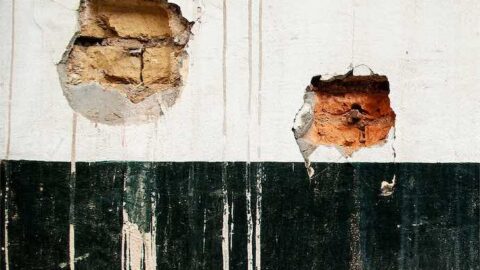As her biography states, Canadian-born/Brooklyn-based composer and multi-instrumentalist Anna Webber lives the overlap between avant-garde jazz and new classical music. Indeed, the material presented on Clockwise, Webber’s most recent record now available from Pi Recordings, exhibits this dynamic juxtaposition from many fascinating angles, effectively blurring what line may exist between these kindred genres, which are perhaps separated only by the common rigidity of thesis and execution in the latter.
Performed by a septet including Webber on tenor saxophone and flutes, Jeremy Viner (tenor sax and clarinet), Jacob Garchik (trombone), Christopher Hoffman (cello), Matt Mitchell (piano), Chris Tordini (bass) and Ches Smith (percussion), Clockwise is an exploration and at times direct reimagining of works in the modern classical canon that have been influential to Webber’s development as an artist. Webber’s finely crafted compositions are drawn from a focused study of major works, specifically for percussion, by a host of unchallenged 20th century masters including Iannis Xenakis, Morton Feldman, Edgard Varése, Karlheinz Stockhausen, Milton Babbitt and John Cage. Webber’s interest lies in the examination of timbre (rather than pitch and harmony) as the dominant formal element and whether or not a coherent piece can be arranged in the absence of those more familiar, latter components.

While the meticulously conceived pieces that form Webber’s Clockwise emerge from a purely timbral atmosphere or rhythmic pattern, there is a consistent evolution pulled through each work by a thread of harmonic and pitch-driven material. It seems clear that Webber’s intention is not to create a tonal vacuum in reaction to the pitchless pieces she is examining, and in each case (aside from a few shorter interludes) the arc she is navigating establishes a model of contrast that begins with one concept and concludes with the other.
Sufficient room is given in many cases for each of Webber’s talented personnel (herself included) to solo and improvise, unfolding into periods that recall a varying jazz-centric paradigm reminiscent of Herbie Hancock, Charlie Haden, Cecil Taylor, Billy Cobham and others, all superimposed upon the pervasive specter of the aforementioned classical titans.
Clockwise’s opening and closing tracks, Korē II and Korē I respectively, are inspired by Xenakis’ percussion masterpiece Persephassa and offer a compelling analog to this work, mimicking Xenakis’ stark and primal structures with percussive extended techniques in the winds and strings. Idiom II moves more in the direction of a John McLaughlin/Mahavishnu Orchestra vibe, and is in fact the only composition on the record without a direct parallel to another existing work, drawing instead from Webber’s own improvisational language.
King of Denmark I/Loper initially removes the listener to a sparkling nebula of timbral ether, and then picks up where Idiom II seemed to leave off, with a pesante sequence of chords that seem to rise continually along a harmonic ladder to an unstable precipice. The first section of this piece, along with its companions, King of Denmark II and III are informed by Morton Feldman’s graphic composition of the same name, while Loper draws elements from Ionisation by Varèse.

King of Denmark II takes shape as an atmospheric interlude of rumbling membranes, slicing bowed cymbals and droning crystalline tones housed within a long crescendo. The peak of the crescendo opens like a door into the spacious world of the titular track, Clockwise, which is inspired by Stockhausen’s Zyklus. Clockwise begins with an extended, virtuosic flute solo spread out over a fragmented bass line that unfolds like slow-motion bebop. The cadential spiral of Loper reprises, ensconced in an effervescent, pointillistic sonority thoughtfully establishing the groundwork for the following track, Array, which travels along a similar arc from spacious staccato to a beefy conclusion featuring the full ensemble.
The two following interludes further illustrate the arc of Webber’s stylistic pendulum. Swinging from the improvisatory avant-jazz character of the tenor sax on Hologram Best and the spectral, metallic glistening of King of Denmark III, the listener is guided finally to Korē I, which closes the circle (or perhaps completes a revolution around the titular clock face) with a clear reprise of the overarching timbre-in-the-place-of-harmony concept.
The question posed in the liner notes as to whether or not a piece can be built without pitch or harmony and, if so, what makes it coherent is often clouded by the luscious and exciting harmonic and melodic content woven throughout Clockwise. It is of course only by implication that the listener might assume Webber’s intention is to answer this question through the synthesis of these works. Alternatively, what she may be doing is illustrating these possibilities using music to restate the question in an abstract way. Most often, it does feel as though Webber’s stance opposes the nebulous austerity of pure timbre as she seems to resolve each piece or point each interlude from percussive entropy toward fertile, harmonic landscapes rife with improvisation over complex changes. Either way, Webber has crafted an enchanting cycle of compositions, worthy of repeated listening and analysis, and the assured discovery of many embedded truths.
























